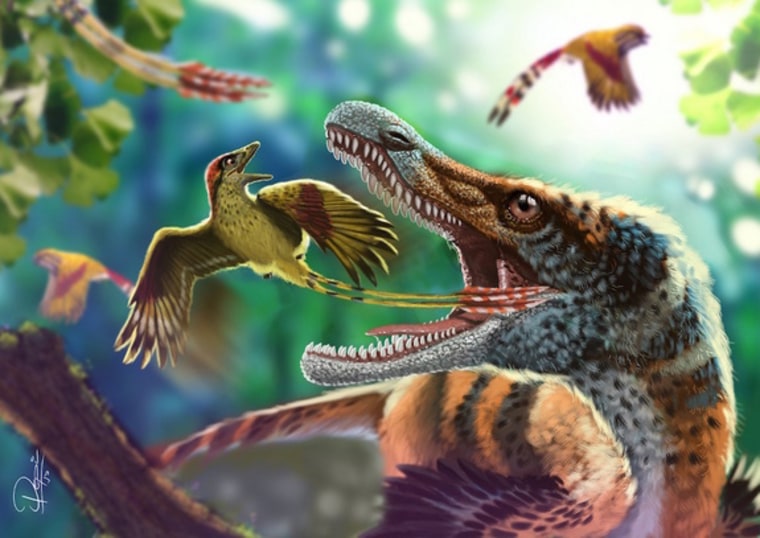About 115 million years ago, a teenage bird with spotted, ribbonlike tail feathers flew around the trees of the supercontinent Gondwana, until it perished and fossilized in what is now northeastern Brazil, a new study finds.
At 5.5 inches from head to tail, the hummingbird-size fossil is the first of its kind to be uncovered in South America, and one of the oldest known bird fossils from Gondwana, a supercontinent that once encompassed Africa, Antarctica, Australia, India and South America, the researchers said.

What's more, it's one of the most complete and well-preserved fossils of a bird with ribbonlike tail feathers from the Early Cretaceous period, and gives researchers an unprecedented view of the intriguing plume that adorned its derriere.
The study was published online on Tuesday in the journal Nature Communications.
Researchers found the fossil in 2011 in Brazil's Araripe Basin, a sedimentary hotspot of fossils ranging from 100 million to 120 million years old. The basin has already yielded thousands of fossilized insects, flying reptiles, turtles, fish and many different kinds of plants, all from the Cretaceous period, de Souza Carvalho told Live Science.
An anatomical analysis of the Brazilian fossil revealed that its flat, ribbonlike tail feathers likely didn't help the bird with balance or flight, the researchers said. Instead, these feathers may have served as ornamentation, and possibly helped the species recognize others of its kind, de Souza Carvalho said. Or, perhaps the feathers were a form of sexual display, or associated with visual communication, he said.
Either way, the tail would have stuck out. It measured about 3.1 inches — longer than the bird's 2.4-inch-long body. Living birds no longer have the same ribbonlike feathers, researchers said, although the tropicbird comes close, with its elongated, ornamental tail feathers that blow behind it in the breeze.
"These are weird feathers that occur in extinct birds," said Richard Prum, a professor of ornithology at Yale University who was not involved with the study. "But they're on a separate line. They have nothing to do with modern feathers. It's fascinating."
The researchers hope to find more avian specimens at Araripe Basin, to learn more about the newfound species. It belongs to the Enantiornithes, a diverse group of birds that lived during the time of the dinosaurs, but researchers have yet to give it a new genus and species.
"We are still comparing it with some birds that came from other parts of Gondwana to decide, exactly, the name that it will have," de Souza Carvalho said.
This is a condensed version of an article that appeared on Live Science. Read the original article here. Follow Laura Geggel on Twitter @LauraGeggel. Follow Live Science @livescience, Facebook & Google+.
MORE FROM LIVE SCIENCE